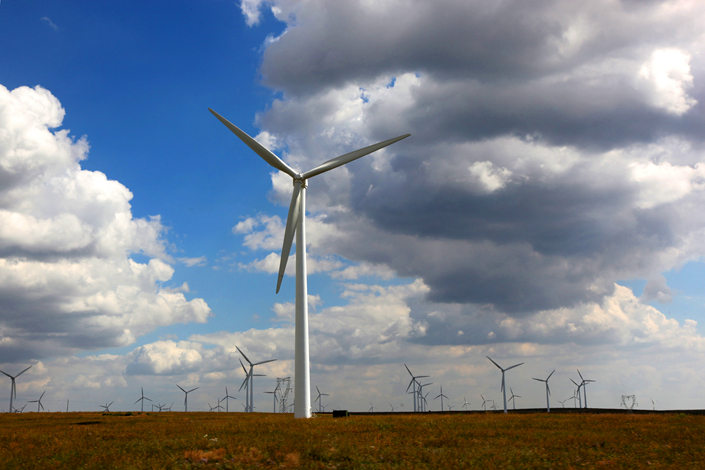Project Ban in Six Regions Saps Wind-Power Shares

(Beijing) — Shares of wind-power equipment makers sagged on Friday after Beijing said it will suspend all approval for new projects in six provincial-level regions due to poor planning of previous wind farms there.
Dongfang Electric Corp. Ltd. shares led the downward movement, shedding 3.4% in Hong Kong, followed by a 1.8% decline for Shanghai-traded Sinovel Wind Group Co. Ltd. Xinjiang Goldwind Science & Technology Co. Ltd. was unchanged, while Longyuan Power Group Corp. Ltd. was the lone gainer in the group, up by a slight 0.3%.
The weak performance came after the National Energy Administration issued a directive giving “red” warning labels to Heilongjiang, Jilin and Gansu provinces and the Inner Mongolia, Ningxia and Xinjiang autonomous regions. That means no new wind-energy projects will be approved for those areas this year.
The agency issued the prohibition after finding the six governments had unacceptably high levels of wind farms that remained unconnected to the national grid, meaning any power they generated was wasted. Gansu was the worst among the six, with a wasted capacity rate of 43%, followed by Xinjiang and Jilin at 38% and 30% respectively.
Gansu and Xinjiang had posted much-lower wasted capacity rates of 4% and 6% respectively in 2015.
Generating activity within the six regions was also below the national average of 1,742 hours. Within that category, Gansu was also the least efficient, averaging just 1,088 hours, followed by Xinjiang at 1,290 hours.
The NEA set up its warning system last year, consisting of “red”, “orange” and “green” ratings, after the rate of wasted projects started to rise sharply in some areas.
China has embarked on an ambitious program to promote renewable energy, including incentives for companies to build solar and wind farms. But many of those projects have been poorly planned, resulting in the jump in wasted capacity, often because projects can’t be connected to the national grid.
Contact writer: Yang Ge (geyang@caixin.com)

- 1In Depth: China Unveils More Nuanced Economic Plan for 2026
- 2Cover Story: How China Inc. Is Discovering Its New World in Brazil
- 3CATL Tests Humanoid Robots on Battery Production Lines
- 4Hainan to Launch Closed Customs Operations for Free Trade Port
- 5In Depth: How a Chinese Mining Giant Learned to Win in Brazil
- 1Power To The People: Pintec Serves A Booming Consumer Class
- 2Largest hotel group in Europe accepts UnionPay
- 3UnionPay mobile QuickPass debuts in Hong Kong
- 4UnionPay International launches premium catering privilege U Dining Collection
- 5UnionPay International’s U Plan has covered over 1600 stores overseas





